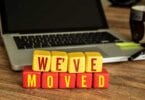Whether for global environmental reasons, local drought issues, or just to cut down on your water bill, there are plenty of smart ways to reducing and managing your water consumption at home. Americans use an average of 100 gallons of water a day, as opposed to Europe’s 50 gallons — so here are some tips for scaling back on your household water use.
Turn off the water while…
Many of us have a habit of leaving the water running while we brush our teeth, shave, wash our hands, or “wait for the shower to warm up”. That can send up to eight gallons of water down the drain each day unnecessarily, more if you’re letting the shower run. Switch up this one simple habit and conserve almost 3,000 gallons of water per year.
Use a bucket in the shower and repurpose
Even if you don’t run the shower for a long time while it warms up, there is still water going down the drain before you jump in. Put a bucket in the shower to catch some of that water and use it for other purposes: watering plants, flushing the toilet (see next tip!), or other creative things that can utilize greywater.
Install a dual-flush toilet, or practice the bucket flush
If you have the opportunity, install a dual-flush toilet in your home that uses less water when flushing just “#1”, and more for the “#2” option. If you are renting or installing a completely new toilet just isn’t in the cards right now, you can use the bucket flush option. Taking the water that you gathered during your shower, pour just enough into the toilet bowl to flush the contents without even needing to touch the clean water in the tank. Voila!
Add water tap aerators
These tiny screens are cheap and can be installed on each faucet in your home to aerate the flow of water, reducing the amount that actually comes out of the faucet while still maintaining water pressure. You won’t even notice that you’re conserving!
Install a water-efficient showerhead
If you take a trip to the hardware store, you’ll see a full range of options for water-efficient showerheads. Some of them will leave you feeling denied of your full shower experience, while some of them use aeration technology to make it feel like you still got your shower and saved water. Check the reviews, see how much water they actually save, and enjoy your shower with a little less guilt.
Only run the dishwasher and washing machine when they are full
It can be tempting to throw a small load through the washer, but unless you have settings that reduce water usage for a small load, it is better to wait until they are full. Generally using the dishwasher does reduce water usage, so as long as you give your dishes a quick rinse before loading them and make sure you load them properly, you can wait a day or two and save yourself the time and effort. Many washing machines have options for a “small load”, so be sure to use that setting and wait until it’s worth the wash.
Check for leaks
Outdoor faucets and hoses, dripping sinks, or perpetually refilling toilets can be significant sources of wasted water that go unnoticed. If you’re aiming for eco-friendly moving, this should be one of your walk-through items as you prepare to settle into a new home. Catch the leaks immediately and set yourself up for a happy and water-conscious life in your new home.
Purchase energy- and water-efficient appliances
When you are moving your utilities to your new home, take the opportunity to get a baseline of what your water usage was in your prior home — and set a new goal. If you have the opportunity, select appliances that are water efficient. Front-loading washing machines are typically more efficient, and many models available have Eco settings available.
Getting ready to move to your new, more eco-friendly home? Make sure you choose the best moving services to make your transition as smooth as possible!







